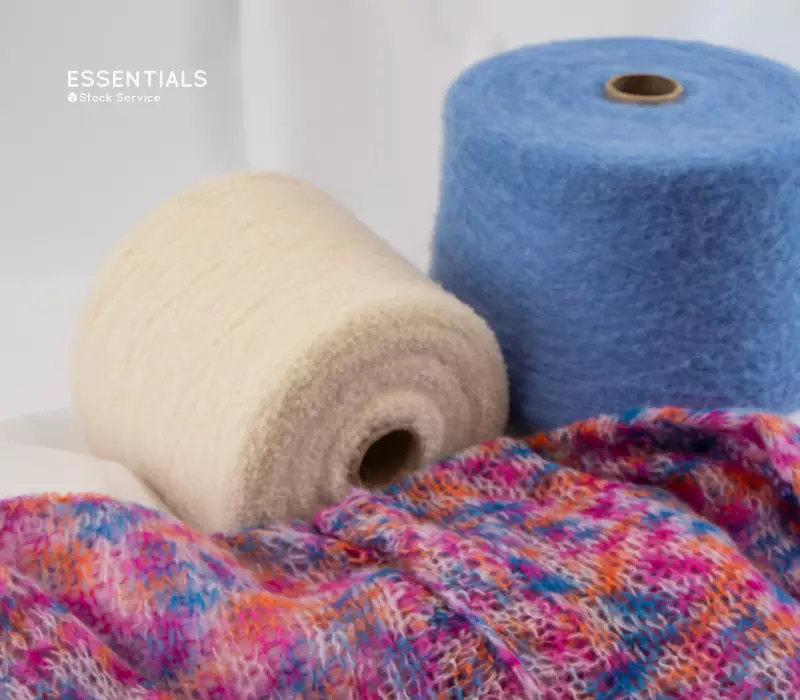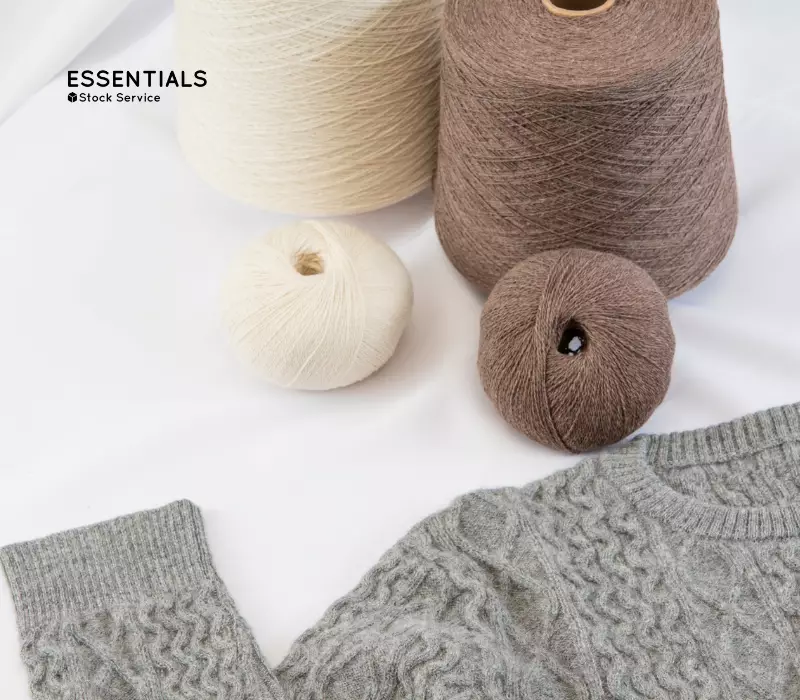Distributing or designing with natural yarns is far more than delivering cones or finishing garments. It’s about offering a complete experience to the end consumer, one that begins with fiber selection and ends with a product rich in story, purpose, and quality. To achieve sustainable sales and stand out in a market that demands authenticity, designers and distributors need practical tools that help them connect more deeply with their customers.
If you work with baby alpaca, royal alpaca, merino wool, or natural blends sourced from ESSENTIAL STOCK SERVICE, these practices will help you maximize their potential. By improving your value proposition, you’ll build customer loyalty, increase demand, and secure repeat orders. Here are 5 proven practices to help you do just that:
1. Inspire with Examples and Concrete Data
Customers don’t buy yarn, they buy ideas. Showing finished products made with each type of yarn helps the end consumer visualize what they can create. That visualization is powerful: it turns an abstract fiber into a desirable garment.
For instance, a distributor in Medellín boosted her sales by showcasing scarves, vests, and hats made with the yarns she offered. It wasn’t just about showing photos, it was about describing how each piece felt, what techniques were used, and who might wear it.
Equally important is explaining how many pieces can be made from a single cone. Many customers have no idea how far a kilo will go. Sharing that 1 kg of baby alpaca can yield up to 10 standard scarves or 4 upper garments turns uncertainty into confident purchasing. This kind of information transforms your catalog into a planning tool, not just a source of inspiration.
When you combine visual examples with clear data, your customer doesn’t just get excited, they feel equipped to make decisions. And that speeds up conversion.
2. Curate Your Offer with Aesthetic and Emotional Appeal
How you present your yarns can make the difference between a one-time sale and a lasting business relationship. Grouping yarns into themed packs, ike “Soft Winter,” “Earth Tones,” or “Timeless Neutrals”, is more effective than organizing by fiber type. This approach sparks emotion, fuels imagination, and simplifies decision-making.
A themed pack isn’t just a color palette, it’s a visual narrative. For example, “Earth Tones” might include warm shades like terracotta, ochre, and brown, paired with a short description evoking Andean landscapes, cultural roots, and a connection to nature. This kind of presentation turns your catalog into a sensory experience.
Complement this with the story behind the yarn. Consumers value knowing where their products come from. Including details about origin, micron count, shearing process, and the producing community enhances the perceived value of the final product. Designers who include this information on their labels build loyalty and justify higher prices, just like our friends at AMANO YARNS.
When your customer realizes they’re buying more than a fiber—that they’re investing in a story, an ethic, and an aesthetic, price becomes less of a barrier. And your brand becomes a creative ally.
3. Offer Technical Guidance and Useful Resources
Selling natural yarns means supporting your customer through their creative process. Knowing which fiber works best for each textile technique improves the final result and prevents frustration. Recommending the ideal yarn for crochet, loom weaving, flatbed knitting, or hand knitting adds value to your service and builds customer loyalty.
One designer in Ecuador went from testing three different fibers to placing regular orders after a single recommendation. We suggested royal alpaca for her machine knitting due to its softness and durability. Her production became more efficient, and her clients more satisfied.
Providing post-purchase support is another game-changer. Technical sheets, usage suggestions, label copy, and environmental data help your customer communicate their final product. Distributors who offer these resources become strategic partners, and see higher reorder rates.
It’s not just about selling cones. It’s about building trust. When your customer feels you’re helping them shine, they come back. And they refer others.
4. Make Access and Decision-Making Easy
In a fast-moving market, speed and clarity are essential. Having a digital catalog, updated regularly and even accessible via WhatsApp, streamlines the buying process. When customers know what colors and fibers you have in stock, they can act quickly and close sales with their own clients without delay.
Accessibility is part of the buying experience. If your customer has to wait days to find out what’s available, they’ll likely look elsewhere. But if they can see your inventory in real time, they feel empowered and confident.
Sharing decision-making data is another underrated but powerful practice. Offering insights on color demand, seasonality, top-selling yarn types, or regional trends helps your customers make smarter purchases. This information reduces commercial risk and strengthens their relationship with your catalog.
For example, if you know neutral tones like pearl gray and beige sell better in winter, you can suggest them as part of a seasonal pack. Or if merino wool sees higher demand in colder regions, you can tailor your messaging to those markets.
Information doesn’t just sell, it builds trust.
5. Communicate with Empathy and Brand Alignment
Not all customers are looking for the same thing. Some respond better to emotional, visual content, while others prefer technical data and commercial efficiency. Adapting your tone to each profile improves engagement and conversion.
For instance, an independent designer may be drawn to stories about producer communities, while a commercial brand will prioritize performance, consistency, and scalability. If you can identify these profiles and adjust your communication accordingly, your message will land more effectively.
Most importantly, help your customer align the fiber with their brand identity. When they clearly understand the properties of the yarn they’ve purchased, its softness, origin, sustainability, your product becomes more desirable. This alignment between raw material and storytelling boosts final sales and strengthens your business relationship.
A clear example: if your customer sells eco-conscious garments, you can highlight that your yarn comes from ethical shearing and chemical-free processes. That information doesn’t just support their narrative, it makes your product part of their brand.
Empathetic commerce isn’t just about understanding your customer, it’s about helping them tell their story better.
Conclusion
Distributing and designing with natural yarns requires more than offering quality products. It demands strategy, empathy, and commercial vision. If you apply these practices, you won’t just sell more, you’ll establish yourself as a trusted, valuable supplier. When your customers grow, so do you. And every yarn they transform into a garment is a story that begins with you.





